
Existing Jim2 user Migrating to MS Edition with Templates (Billing Templates)
This example is included to help existing clients that have been using jobs and the Create Similar function to manage the recurring billing of contracts, and are looking to move to the Managed Services feature to gain greater efficiency in the billing process. This example is designed to get you up and running as fast as possible with the billing template process.
Step 1 – Managed Service Type Creation
Create one Managed Service Type for each Managed Service offering. Go to Tools > Setups > Projects > Project Types, and add the following (all should be of System Type Managed Service):
MS Exchange
MS Security
MS Internet
MS IT Services
Managed Service
|
If you wish to have all Managed Services on a single client contract, you may opt to have a single, more generic Managed Service Type, such as Managed Services. |
The main implication of doing this would be that it is no longer possible to easily analyse actual labour/contract profitability at a product offering level, as actual time logged cannot be allocated to the individual parts of the contract. For example, how much actual time (and theoretical cost) was spent servicing one product versus another in your range, and how much did you bill for each?
The upside is fewer projects per client, but this is not generally an issue given the flexibility in which they can all be billed on the same monthly invoice using existing Jim2 bulk invoicing capability.
Once completed, move to the next step of creating your client projects and project-specific billing templates
Step 2 – Create your Projects and Project specific billing templates
Go to Projects > Add Project

▪Create a Project, and update required header information as applicable.

|
You will see some letters underlined in the field names within the header, eg. Cust#. Using Alt+ the underlined letter will jump you to the field beside that heading. |
▪Click Save, then Edit.
▪Select the Templates tab on the Project.

You will notice the Billing line is highlighted in red. This is to alert you to the need to create a contract-specific version of your billing contract template.
▪Click Edit and then the Action Wizard.

▪Select Billing from the drop-down list.
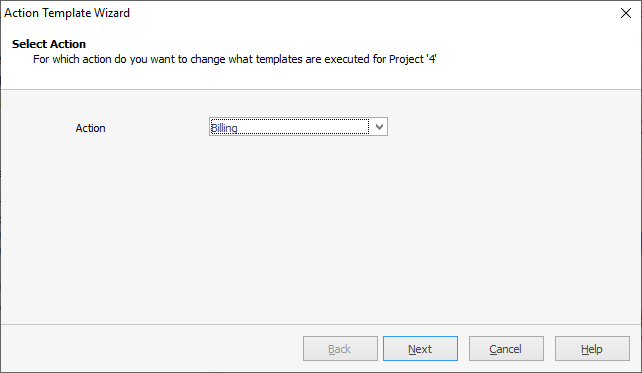
▪Click Next (Current Action Window).
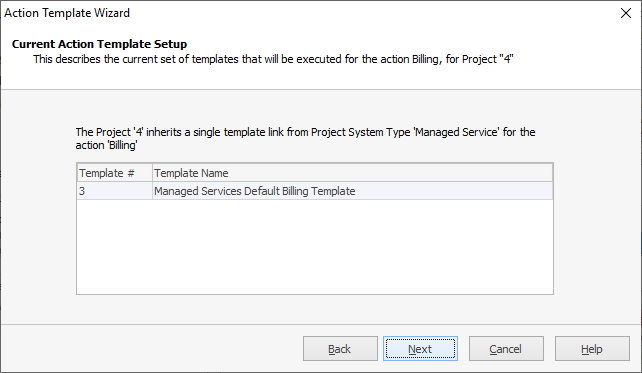
This screen is just letting you know you will inherit values (Current Action Template setup screen). Click Next.
▪Select Change so that a different template is used in place of the existing Template, then Next (Change the Action Template Setup Window).
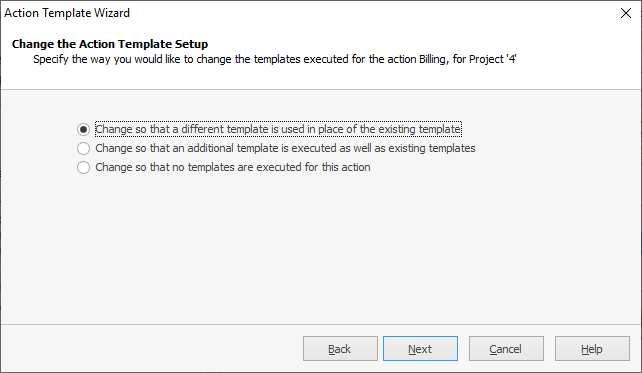
▪Select Create a new template.
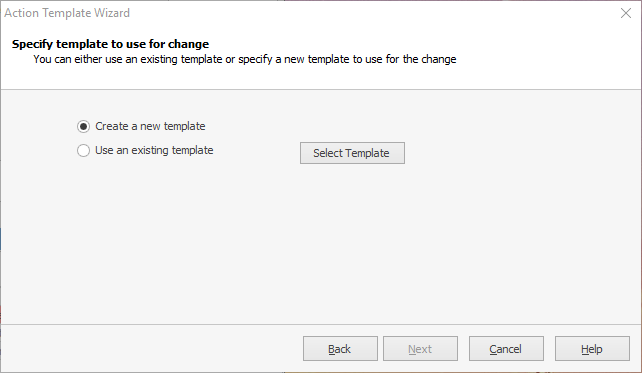
You will be prompted with the new template in Preview mode:
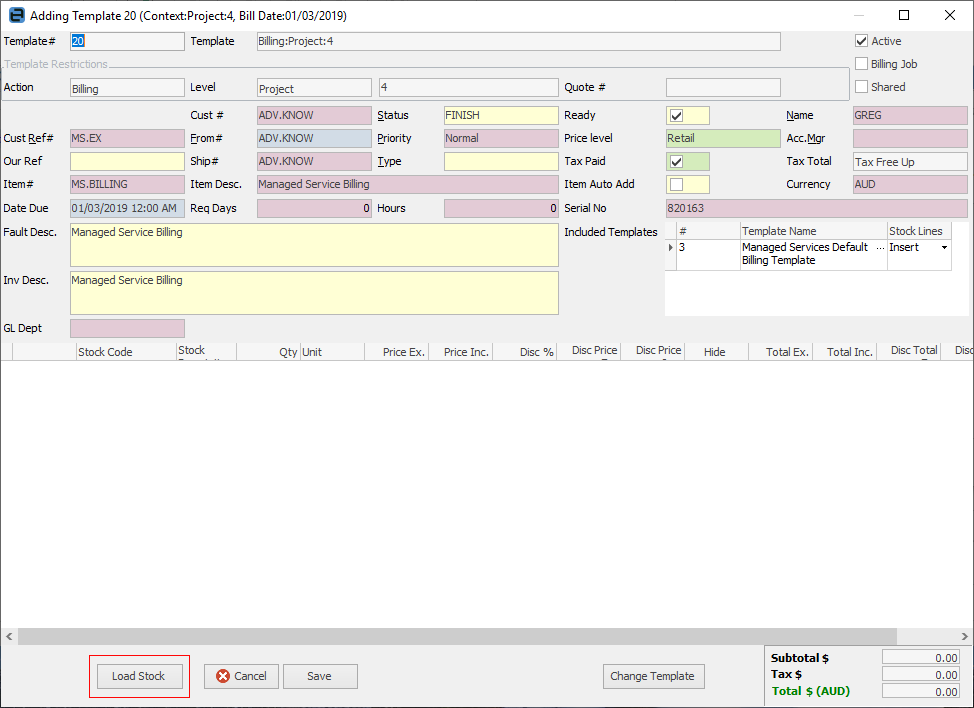
▪Click Load Stock and you will be prompted for an existing job to load the stock from.
–Enter the Job# for the job you currently use to bill this client the old way.
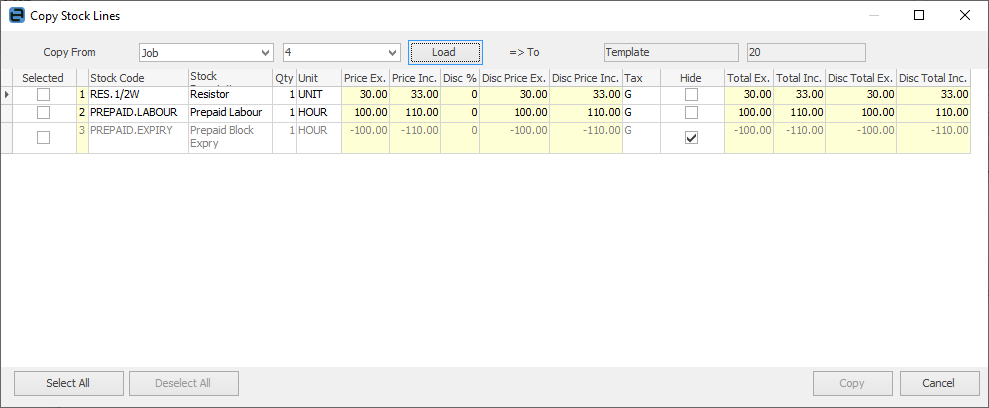
–All stock lines will be brought across once you tick the Selected tick boxes and click Copy.
–Edit the stock lines as applicable, and ensure they are set out exactly how you wish them to appear on a billing job.
–Check your pricing and quantities.
–Make any other client-specific changes to the template if required.
–Click Save.
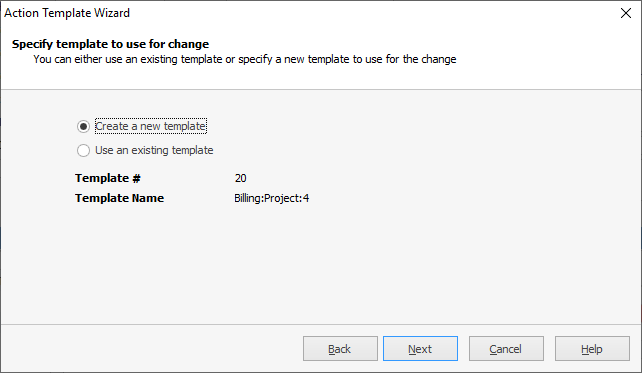
▪Click Next to confirm the change. You may see the following screen if there is an included template:
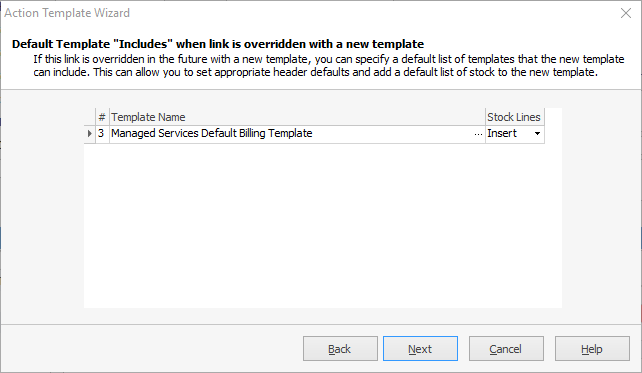
▪Select the Billing Date option and click Next.
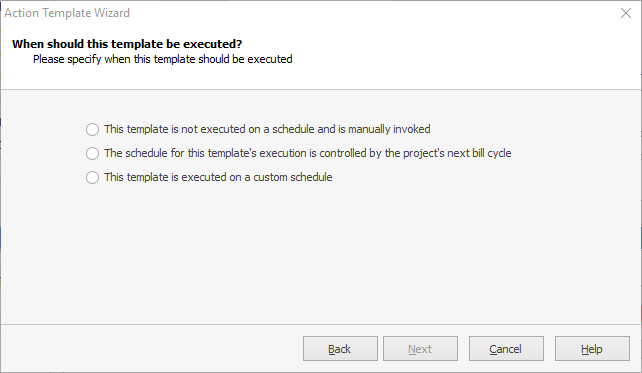
▪This is most often controlled by the Project’s next bill date (When should this template be executed screen).
▪Click Finish to complete the process.
▪Repeat this process for each of your Projects (contracts).
▪You have now completed all steps, and are ready for invoicing.
The billing process has not changed. Billing jobs are created from projects at the appropriate time during the month, and are set to Ready for the next invoicing run.
Further information:

